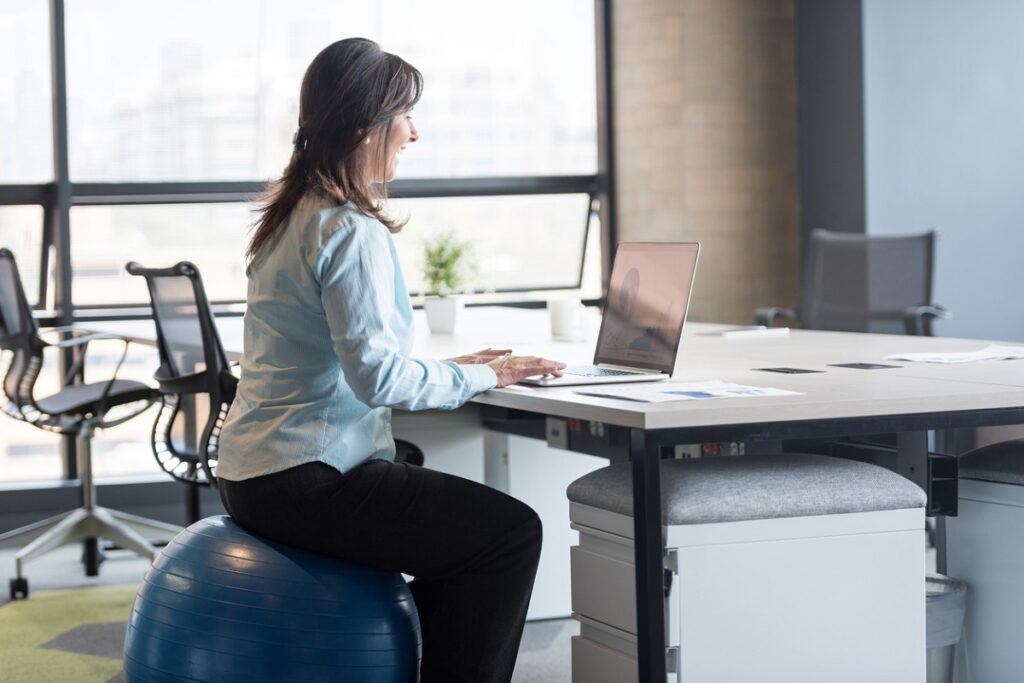The working world is going through some seismic changes at the moment, which mirror the nation’s changing demographics as we enter 2018. The burden of ill health on the economy and the burden of ill health on employers is significant as people work harder and for longer.
Now more than ever the prospect of having a 70 year old working alongside a 17 year old not only presents challenges to the way we manage and nurture our workforces but also opportunities.
One-size-fits-all won’t cut it now
A once-one-size-fits-all benefits package that may have once encompassed health and wellbeing (H&W) is now not enough to cater for millennials’ expectations or indeed the needs of an older worker. Health and wellbeing now transcends single agendas and encompasses HR to H&S and L&D to marketing.
Marketing Week are predicting H&W to be the boardroom trend of 2018. Of as much significance is the fact key marketing strategists have such a keen interest in health and wellbeing. They know the importance and value of human interest stories feeding the content hungry media channels they service.
And watching all these statistics unfold are PHE (Public Health England), who have a big agenda on some of the most pressing health concerns of the modern era. And amongst others – guess what – physical health and wellbeing is of huge importance.
Being inclusive around health and wellbeing
More importantly is erasing the ‘in’ from ‘inactivity’ and getting us all moving that little bit more. Take the One You campaign for example – PHE’s portal of information to encourage us all to value that 10 minutes of brisk walking or movement. Their aim: long-term behaviour change.
Even Sport England have waded in the mix tackling the inactivity problem with twelve extensively funded Local Delivery Plan areas to test new ideas and approaches in creating partnerships to get people moving more.
I could quote the benefits of physical activity. We all know them. In truth most people I work with can quote word-for-word why it is good for them. The issue is a) the time to do it b) the willingness to do it c) previous bad experiences and of course our convenience culture.
We know MSK (musculoskeletal issues) resulted in 31 million working days lost in 2013, according to PHE, and that prolonged sitting down at a desk contribute to MSK risk factors. We also know that the average working adult is sedentary 9.5 hours per day (British Heart Foundation).
Professor Stuart Biddle, Professor of Physical Activity and Health, says: ‘People who spend long periods of time sitting have been found to have higher rates of diabetes, cardiovascular disease and death from all causes.”
And we are not talking gyms when we discuss ‘physical activity’. We are talking 10 minutes exercise, using the stairs instead of the lift, active travel to work (walk, cycle if possible) and taking the opportunities to build movement into everyday lives – work being one of those key times you can do so.
The influence of environment on choice
We know the environment influences choice but we also know that people will engage more when others do so – in other words when the culture of a work environment shifts. It is a bit like Chinese whispers – spreading the word that moving around is a cool thing to do in this organisation.
So as we delve further into the overwhelming evidence it seems that lunch time walks have far more importance than just a few pointless steps – they’re quite literally the equaliser to all that sitting. More so regular exercise often leads to more, and then we start thinking differently and changing bad habits with good habits. Experts know this.
The need to re-engineer physical activity back into our lives is as important to 17 year olds as it is to 70 year olds. Then there is that middle age group sandwiched in-between where early intervention could prove highly effective in minimising future health issues.
Technology can not only aide movement (think Fitbits, Strava etc) but it can also inhibit movement through long periods playing games, working at a desk and erasing the need to move through instant messaging facilities. It’s a click away rather than a few steps away to the next desk, which of course involves far more muscle groups than moving a finger.
The role of incentives
Incentives work well at encouraging healthier behaviours. As does, to a certain degree, competition in workplaces. But to truly grasp H&W the boardroom needs to drive down the importance of its application through the workforce paving the way for some important changes.
These changes can be anything from flexible working policies, salary sacrifice schemes or working from home arrangements – all quite a significant change and indeed all with workforce implications in terms of fair deals across employee groups and the difficulty of some operations when it comes to shift working. The key is managing these and having a plan in place to support H&W.
Some employers in countries such as Sweden have even offered employees an extra week’s annual leave if they exercise regularly. That alone is a statement in itself of the value put on exercise as a way of improving the health of the workforce – but ultimately translating that into a business outcome.
Back here in the UK the drive for increased amounts of exercise comes from central government through such bodies as PHE. Other organisations such as The British Safety Council, HSE, and CIPD are accelerating a body of research on ‘going home healthy’ campaigns and integrating H&W across HR policy.
Regionally and locally there are examples the length and breadth of the UK of successful H&W programmes. As yet none bigger enough to make a national impact, but still demonstrating some proactive ways to mitigate MSK risk through learning workshops, aligning with national campaigns and resource and activating exercise in workforces.
I work with the National Centre for Sports and Exercise Medicine (Sheffield) and focus solely on the Sheffield City Region (SCR) in terms of engaging workforces in physical activity. This isn’t just one-off exercise sessions, but rather installing a culture of movement across the city and in business. This is simply called Move More. Sheffield is aiming to become the most active city in the UK by 2020.
Some of this is done through a free website portal that tracks steps with league tables that is available in Sheffield where the city essentially competes for active minutes across a month, with schools involved, communities and over 100 businesses in 2017.
It’s a great and fun away to draw interest, capture some great human interest stories and showcase the pursuits of employees in business. For me it is about learning what’s going on out there and sharing best practice.
The business world speaks to the business world. And to truly grasp the H&W agenda could provide a wealth of business and marketing opportunities well beyond reducing absences and increasing productivity.






